Recently we started our “Design Around the World” article series on DESK. The goal is to feature design communities we might not hear that much about. So far we’ve talked with designers from Nigeria, Iran, Pakistan and South Korea. Brazil was next on our list.
Then I stumbled upon Bonde, an upcoming conference in New York dedicated to bringing attention to Brazil’s work and highlighting the Brazilian design community. I met briefly with the two organizers, Felipe and Leo, and loved hearing about their motivations and the Brazilian design community. I think you will too.
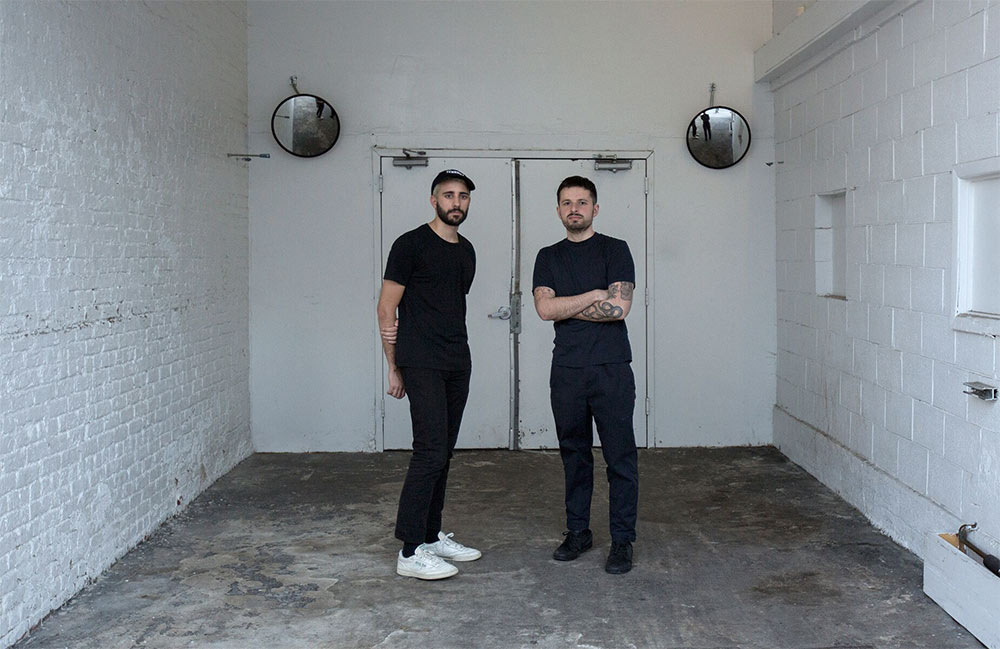
Hey, Leo and Felipe! First question: WHY are you doing Bonde? I assume it’s anything but easy to create a conference like this. What brought the idea about and what would make Bonde a success for you?
FELIPE & LEO: Thank you Tobias, it’s a pleasure to talk with you. We couldn't agree more; it’s anything but easy to create a conference like this.
LEO: It all started with the desire to connect Brazilian creatives living in NY. We wanted it to be a small gathering at first, but as more and more people showed interest in it, we realized Bonde could serve as a bigger platform — one that could not only connect Brazilian designers amongst themselves, but most importantly, connect Brazilian designers to the rest of the world.
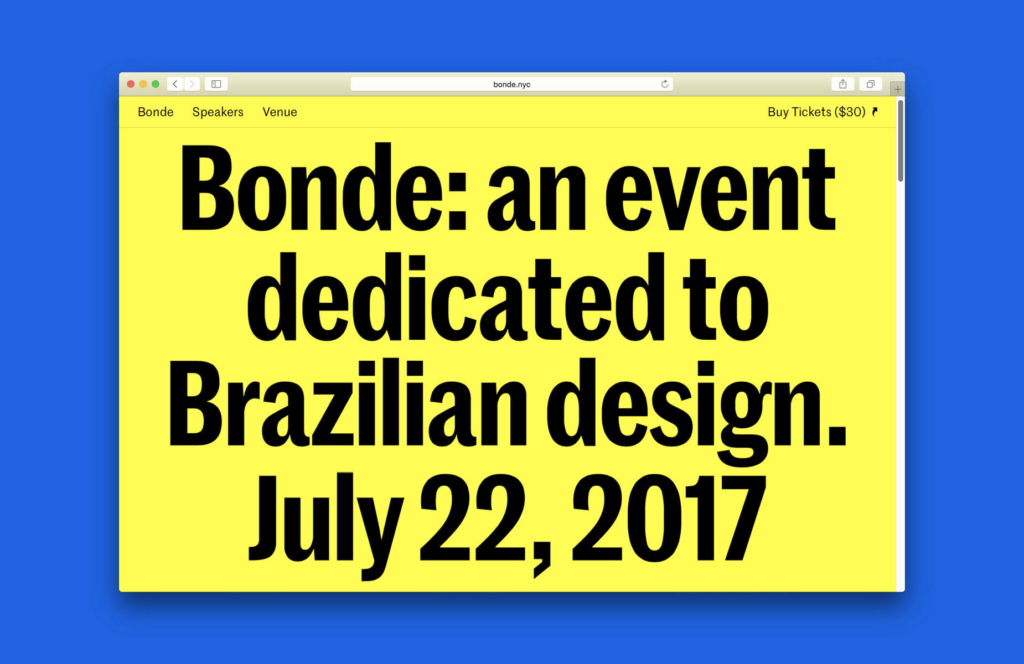
The Bonde Website
One of our main goals with Bonde is to raise awareness of Brazil's many contributions to design, while presenting a more complete perspective on what Brazilian design could be.
“Brazil is so big and so diverse that it is impossible to explain its aesthetic like one would with Swiss, German or Japanese design.”
When you search "Brazilian design" on Google, you will probably see a lot of colors, organic shapes, ornaments and tropical-themed illustrations, which we don't think are misinterpretations of the country’s design necessarily, but there is a lot more to it that is sometimes overlooked. Brazil is so big and so diverse that it is impossible to explain its aesthetic like one would with Swiss, German or Japanese design.
Brazilian design has multiple dimensions and possibilities. That is why Frederico Duarte, one of the biggest researchers and experts in the field, will open our conference with the talk, “What If There’s No Such Thing as Brazilian Design?” We can't wait to see it!
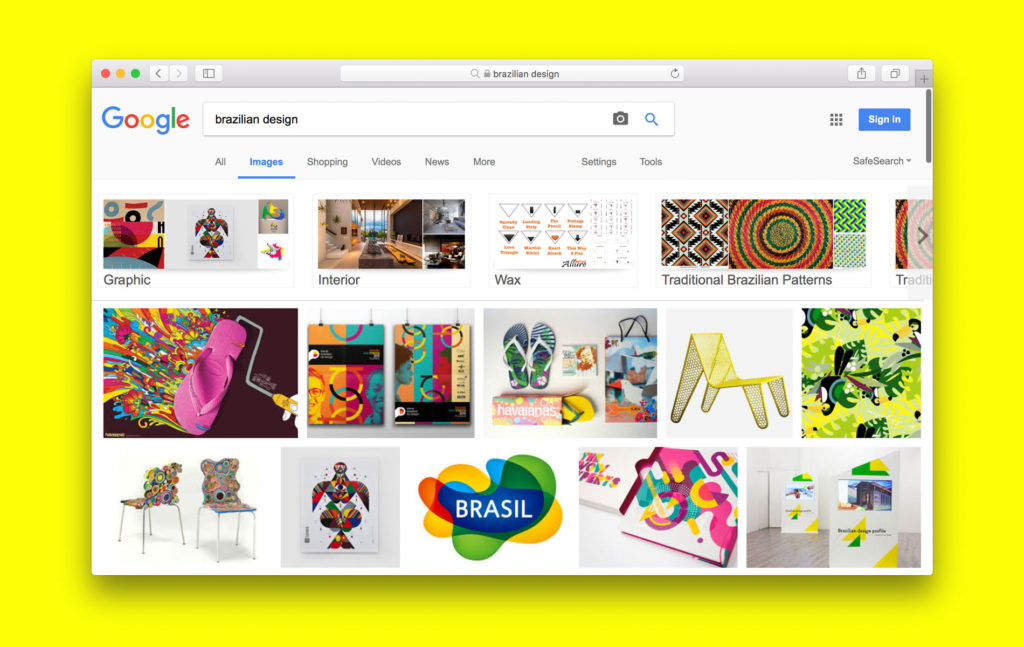
(Brazilian design on google images)
Like you said, Brazil is massive. More than 200 million people live there and it’s the 5th largest country in the world. As I understand it, the country experienced rapid growth in the past decade making it the 8th largest economy in the world. This was followed by an economic crisis in 2014 that still continues into 2017.
How have these factors influenced the Brazilian creative industry and design community? What are the unique challenges for Brazilian designers that we don’t see anywhere else?
FELIPE: The economic growth Brazil went through in the past decade helped the creative industry in a couple of ways. With the rise in accessible technology, information and digital tools became readily available and as result, design became a mainstream profession. Besides, government-sponsored university programs such as Pro Uni and racial quotas have helped make college education more democratic in the country, including design, which was previously considered to be an elitist profession.
With the recent crisis we are facing, many of these achievements are unfortunately at stake. Studying design in Brazil is expensive, and being a designer doesn't pay well. With the uncertainty of a successful professional future, young people are pressured to pursue traditional professions.

One of the challenges we face working as designers in Brazil is the fact that creative industries are very much driven by advertising culture. That means large design jobs that should have been assigned to a design firm are repeatedly handed over to the creative departments of ad agencies (the 2014 World Cup identity is a good example of that). As a result, most large brands in Brazil have their accounts associated to a specific ad agency that handles all their communications throughout the year, with no distinction between advertising or design jobs. And while there are amazing small design studios doing great work in Brazil, when they get the chance to work for these larger brands, it is often as a contractor to advertising agencies, meaning there is little to no direct communication between them and the final client.
Another challenge I believe is specific to working in Brazil is the fact that opening, keeping (and closing) your own business is an extremely hard process. So as an entrepreneur, a large portion of your time and energy ends up being spent on these bureaucracies, and not in developing your creative work.
“I believe it is at times of crisis that the potential for change, discovery and innovation is at its highest.”
On top of that, it sounds like most Brazilian businesses, with less confidence in the economy, decrease their budgets and tend to be more risk averse when it comes to new ventures. As creatives, we not only thrive when there is confidence in our work, but also when companies value what good design can do for them. But as you mentioned, design is often seen as an elitist field. It’s not considered the solution to a problem, but something only afforded when you’re doing well.
How do you think Brazilian designers can convince companies that design might be exactly what they need?
LEO: We wish we knew how to convince companies that design is exactly what they need, especially at times of crisis. But we know it's not that simple.
I agree that the role of design is sometimes overlooked. Especially at times of recession, it can be labeled superfluous by clients who have bigger issues to deal with. It makes sense for companies to want to take a more conservative approach and lower their risk tolerance, but I believe it is at times of crisis that the potential for change, discovery and innovation is at its highest. In fact, I believe the creative market can thrive during times like this. Adverse circumstances can serve as stimulus for change, and Brazilian creativity is in many ways an example of that. Brazil has a rich history of design innovation, especially involving challenges like environmental sustainability, social equality and diversity. I would argue that the creativity Brazilians are known for is probably results from the need to find creative ways to work with limited resources.
I remember joking when I met up with you that every creative agency in New York used to have at least one Swedish designer, mostly because Sweden is good at exporting their creative talent. But now, it seems as though every agency has at least one or more Brazilian or Latin American designers. What do you think is the reason for this change and the increase in Brazilian talent being exported around the world?
FELIPE: I think there are a couple of reasons why there is such an increase in Brazilian and Latin American talent being exported around the world. One of them is the economic recession, which we just discussed. The second one is the fact that there are many Brazilians in leadership positions at creative companies like Huge, BBDO and R/GA that end up connecting and attracting Latin talent through their networks. Others professionals have partnered to open their own business on American grounds (FLAGCX and Work&Co are two good examples) creating a bridge between Brazil and the U.S., and facilitating transfers of talent between the two countries.
You both work in New York but were born and raised in Brazil. Do you think it’s important for your origins to influence your work?
FELIPE: I think everyone's origins, life experiences and all the visual and cultural stimulus one absorbs throughout their lives (whether consciously or not) will influence their work. I feel privileged to have had the chance to experience different cultures and to bring that with me to New York. Not necessarily just because I am Brazilian, but because I come from a totally different place and my experiences can add something to the table.
LEO: I am a true believer that creative innovation is often the result of collaborations and cultural collisions between people with different points of views and different backgrounds, so in that way, yes, I think it is important that your origins influence the work you do.
Let’s talk about Bonde for a second. I noticed you have a nice lineup of Brazilian speakers, some I haven't heard about, which is exactly the reason I love so much what you’re doing. What was your criteria when you put the list of speakers together?
LEO: The main criteria for selecting our speakers was to not have a single criteria that could be applied to all the speakers. Instead, we had the desire to invite a diverse group of people that could bring different perspectives to the discussion.
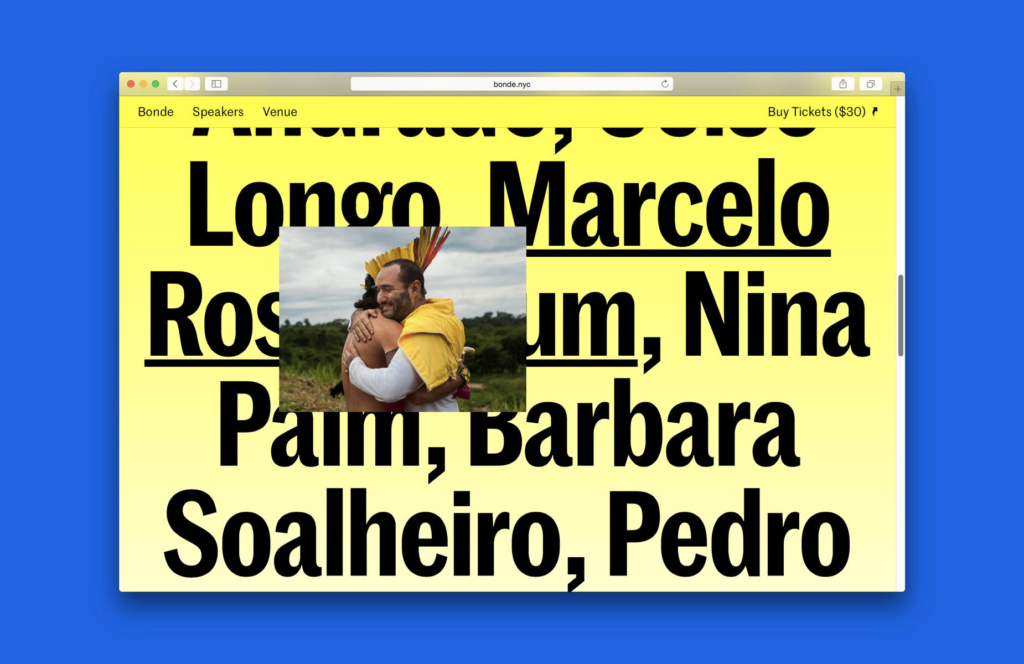
(Bonde speakers)
Our final lineup is a wide range of design-practitioners, including names like Jonathas de Andrade, a fine artist who uses graphic design as a medium to discuss contemporary Brazilian subjects; Barbara Soalheiro, a writer who is challenging the design process through her new entrepreneurship; and Rimon Guimarães & Zeh Palito, a duo that spent all of last month painting murals in refugee camps in Syria.
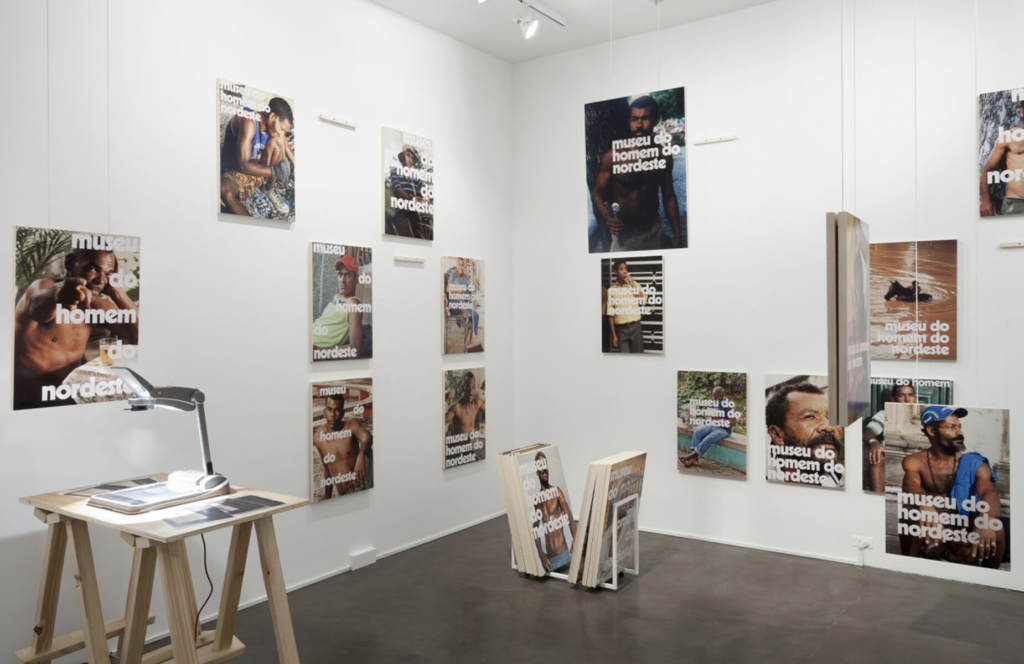
(Jonathas de Andrade – O Museu do homem do Nordeste)
For those of us who are interested in getting to know the Brazilian design community more, are there any blogs, publications or other resources that would help us to get a better picture of Brazilian design?
LEO AND FELIPE: Unfortunately, it’s hard to find a lot of content in English, so we decided to share a list of things about Brazil that inspires us, directly or indirectly related to Brazilian design.
- These Brazilian AGI Members
- BRGB: Like a Site Inspire or Hoverstat.es of Brazil.
- Nowness: Incredible Brazil-related gallery
- Inhotim: A giant outdoor contemporary art center and botanical garden with over 4,000 plant species. A must-go.
- i-D Magazine's documentary on the girls who are leading the beauty revolution in Brazil.
- SP Arte (São Paulo International Art Fair) page on Artsy: A great starting point for Brazilian contemporary art.
- This is an amazing archive with works from Almir Mavignier, artist and Brazilian designer pioneer (curated by Thiago Lacaz).
For Portuguese speakers or people who are willing to learn it:
- Plana, the Brazilian version of NY Book Fair
- Diagrama, a new design podcast in Portuguese
- A Escola Livre (the Free School), a design education experiment.
- NoBrasil, a Brazilian culture platform dedicated to diversity, with a focus on the country's African influence.
And if you happen to be in NYC:
- Whitney is bringing the first full-scale U.S. retrospective in two decades of the Brazilian artist Hélio Oiticica (Jun 14 – Oct 01).
- July 23rd is the last day to visit the first major U.S. retrospective exhibition devoted to Brazilian artist and designer Lygia Pape, at the Met Breuer.

(Bonde’s instagram)
____
Leo and Felipe: Thanks so much for your thoughts and insights into the Brazilian design community! I feel like I already have a deeper understanding and appreciation for Brazilian culture and design, and I know the Bonde conference will share so much more.
Everybody else: If you can be in NYC on July 22, buy tickets to Bonde, and be sure to tell your NYC friends! I promise it will be worth your time.
Thank you for reading,
Tobias


No comments.